About 15km north of Ngoc Hoi district center, Kon Tum province, Dak Rang village, Dak Duc commune has nearly 120 households with 348 people, of which 99% of the population are Gie Trieng people. On weekends, the sound of gongs and xoong singing is bustling, attracting groups of visitors. "Since 2023, the whole district has not had any cases of early marriage and incestuous marriage", the excitement was clearly evident in the words and expressions of Vice Chairman of Que Phong District People's Committee (Nghe An) Bui Van Hien when sharing this with us. Because we understand that this result not only reflects the clear change in people's awareness and actions, but also shows the tireless engagement of the entire political system with the determination to push back child marriage and incestuous marriage that have persisted for generations in this land. On the afternoon of December 12, in Hanoi, President Luong Cuong visited and worked with the Ministry of Foreign Affairs. In the cold weather, under the high roof of Kon Klor communal house, young men played solemn gongs, barefoot girls played graceful xoang rhythms, men wove and sculpted statues, women wove fabrics... The cultural space of ethnic minorities in Kon Tum was fully and vividly recreated, captivating many visitors from near and far when they came to attend the 2nd Kon Tum Gong and xoang festival of ethnic minorities in 2024. On the morning of December 12, the Party Committee and People's Committee of Khau Vai commune (Meo Vac district, Ha Noi) held a ceremony to organize a ceremony to mark the 100th anniversary of the establishment of the Kon Tum Gong and xoang festival. Giang) in coordination with the charity group "San Dinh Charity Community" organized the groundbreaking ceremony for the construction of a classroom building for the Ha Ca pre-school and primary school in Khau Vai commune. Implementing the emulation movement nationwide to join hands to eliminate temporary and dilapidated houses launched by the Prime Minister, on the morning of December 12, officers and soldiers of Xin Cai Border Guard Station (Ha Giang Provincial Border Guard) actively participated in supporting poor households in the area to eliminate temporary and dilapidated houses. As both the Party Cell Secretary, Village Chief and Prestigious Person of Phai Lau village, Dong Van commune, Binh Lieu district, Quang Ninh province, in recent years, Mr. Tang Dau Tinh has become a trusted "support" for the Dao people in the border area here. He not only did a good job of propagating the people to stay in their villages, protect their land, protect their forests, and protect their national borders, but he also did a good job in economics. In order to promote gender equality and solve urgent problems for children in ethnic minority and mountainous areas, Chu Puh district, Gia Lai province has established 3 models of "Leaders of Change" Clubs in secondary schools in particularly difficult villages and hamlets. The members of the Club will be the pioneering "nuclei" to change perceptions, eliminate gender prejudices right from school and in the community to develop together. General news of the Ethnic and Development Newspaper. The morning news on December 12, there is the following notable information: Preserving the beauty of traditional costumes of ethnic groups in Lang Son. Unleashing the source of medicinal herbs in Dak Nong. The story of land donation in Bang Coc. Along with other news in the ethnic minority and mountainous areas. Implementing Project 6, the National Target Program for Socio-Economic Development in Ethnic Minority and Mountainous Areas (National Target Program 1719), recently, the People's Committee of Tuong Duong District (Nghe An) presented gongs, cymbals, loudspeakers and performance costumes to traditional art troupes. Located at an altitude of 1,086m above sea level, the Indochina junction in Bo Y commune, Ngoc Hoi district, Kon Tum province is the junction between three countries: Vietnam, Laos and Cambodia. Known as the place where "a rooster crows, three countries can hear", for many years, the Indochina junction has become an attractive destination attracting many tourists who are passionate about traveling, exploring and experiencing new things at the three-border landmark. During the development stages, Quang Ninh province has always paid special attention to the comprehensive development of ethnic minority and mountainous areas. In particular, the province has issued Resolution No. 06-NQ/TU on "Sustainable socio-economic development associated with ensuring national defense and security in communes, villages, and hamlets in ethnic minority, mountainous, border, and island areas for the period of 2021-2025, with a vision to 2030" (Resolution 06). From the Party's orientation and policies, the State's support resources, and the efforts of all classes of people, the ethnic minority and mountainous areas of Quang Ninh have changed significantly. In the journey of development in the villages, many bright examples have emerged in various fields, becoming typical nuclei spreading the spirit of self-reliance, self-improvement, and innovation in thinking in ethnic minority areas. Promoting the strengths of agriculture and forestry associated with culture to develop tourism, building the locality into a tourist destination, contributing to poverty reduction, creating sustainable livelihoods for people is the new direction of Ham Yen district (Tuyen Quang province) in recent years. Linking the development of commodity agriculture, supporting capital, seeds, science and technology and product consumption are strengths of the collective economy. In Ham Yen district, participating in the chain of linkages with cooperatives, many farmers have made a breakthrough, become rich, and contributed to building brands for local agricultural products.
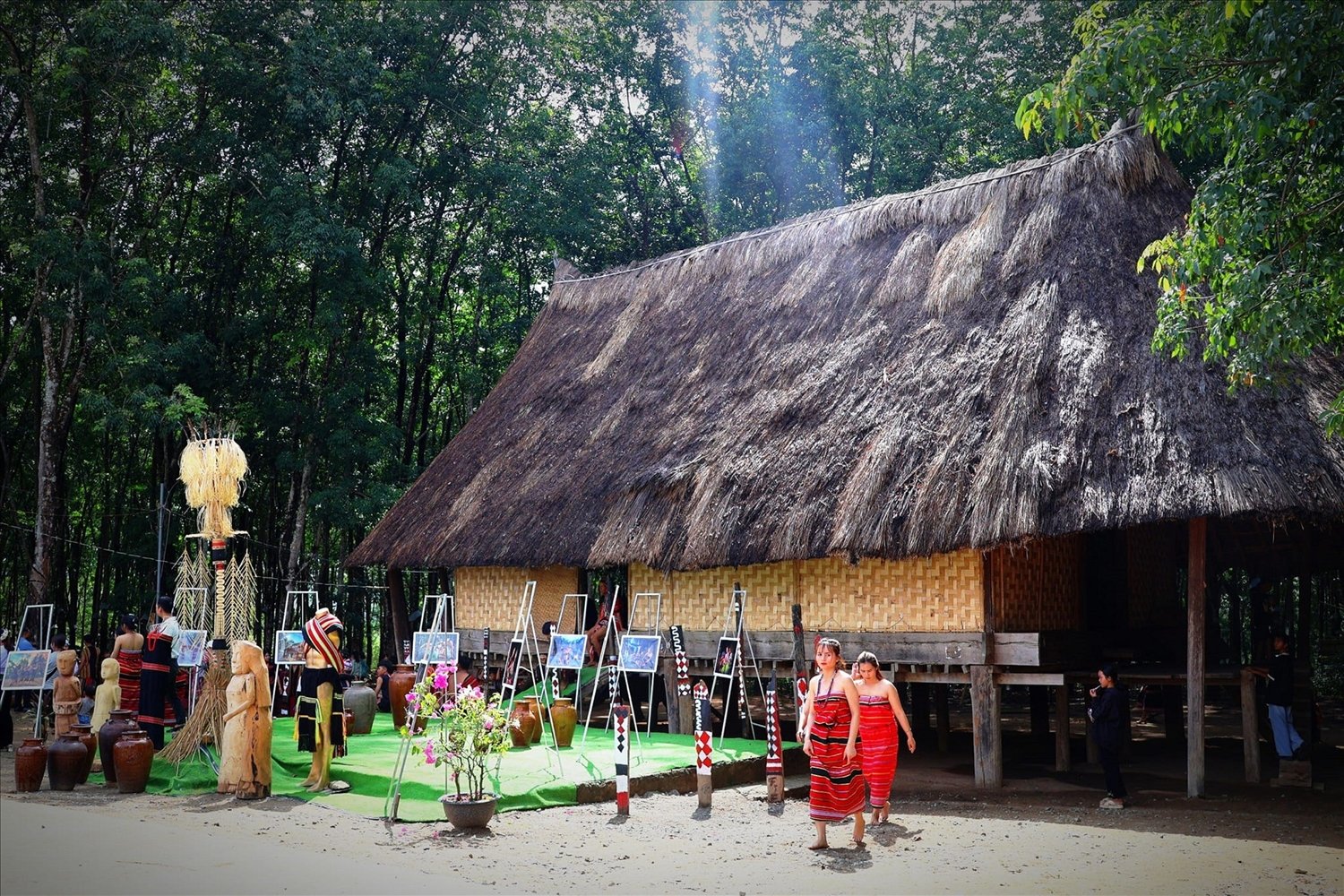
In the border village
Village elder A Brôl Ve happily welcomed the strangers to his village as if welcoming the children of the village who had been away for a long time. The handshakes, the warm smiles, the warm, loving eyes and the sincere, simple greetings. The people of the highlands have always been like that, they are hospitable and simple like the forest trees, open-minded like the mountain wind, honest like the flowing stream, rustic like the land, like the forest...
Generations have passed through this land, the people there are as steadfast as the Truong Son mountain range, as warm as the red fire. The boys and girls in the village diligently make rice wine, weave brocade, and craft unique musical instruments. They preserve for their village the cultural activities of gongs, xoang dances, and some traditional festivals such as the Cha Chah Festival (Coal Eating Ceremony), Buffalo Eating Ceremony... At the age of 77, the village elder, Meritorious Artisan A Brôl Ve, has white hair over time, but his eyes are still sharp, his hands are agile, and his voice is smooth. He still remembers the customs and the thousand-year-old cultural features of his ancestors. In his youth, he fought the enemy, and in his old age, old A Brôl Ve likes to do tourism, likes to teach children many songs, panpipes, flutes, gongs... to preserve the cultural identity of the Gie Trieng people.
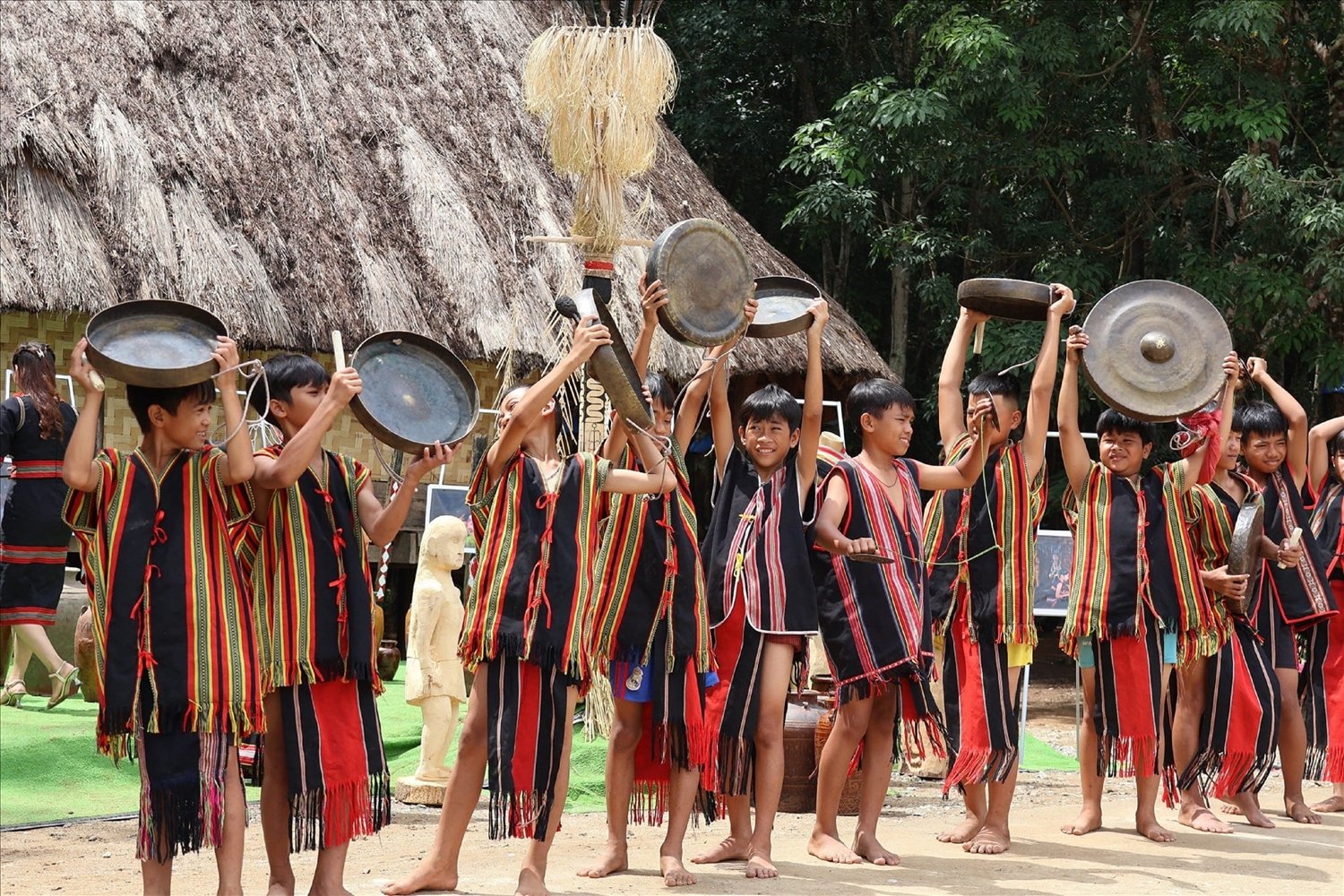
Although the whirlwind of civilization and urbanization has flooded every corner of life, the people here still maintain the old ways. The village established two teams of artisans to preserve the sound of gongs and cymbals with soft and graceful xoang dances. In the past, village elders A Brol Ve and Bloong Le encouraged the villagers to establish two teams of old and young artisans. Thanks to the artisans' "passing on the fire", up to now, the two teams of artisans have developed strongly. The old and the young, men and women enthusiastically practice and exchange culture with other ethnic groups in and outside the province. People in Dak Rang village also participate in cultural and sports festivals of ethnic groups, gong cultural festivals, folk song and dance festivals of different scales... These activities have contributed significantly to the preservation and promotion of the cultural heritage of the Gie Trieng ethnic group.
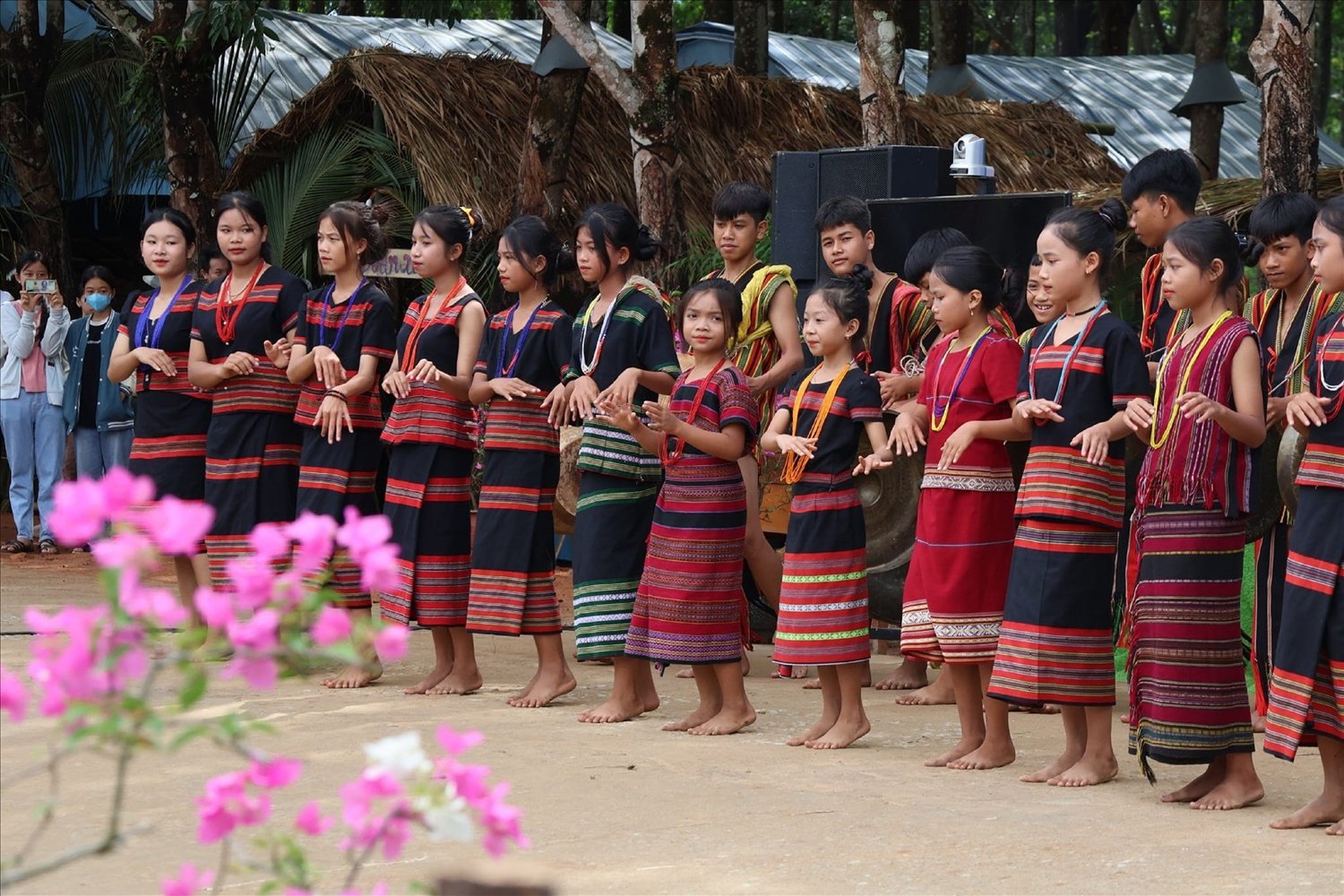
One special thing is that old man A Brol Ve can use and make 15 different musical instruments. To preserve the identity, he has opened many classes to teach the village youth how to make musical instruments, play flutes, play gongs, etc. He has been to Hanoi 3 times and Ho Chi Minh City once to perform at major festivals.
In Dak Rang village, twice a month, a team of about 50 male and female artisans in traditional costumes review the xoang dance and gong dances and compose new dances, so that the sound echoes through the mountains and forests. Having no money, the whole village saved up money and rice to buy a gong set so that the sound of the gongs could resonate far and wide. Most of the villagers today are devoted to preserving, passing on, and continuing to maintain the festivals, customs, and good practices.
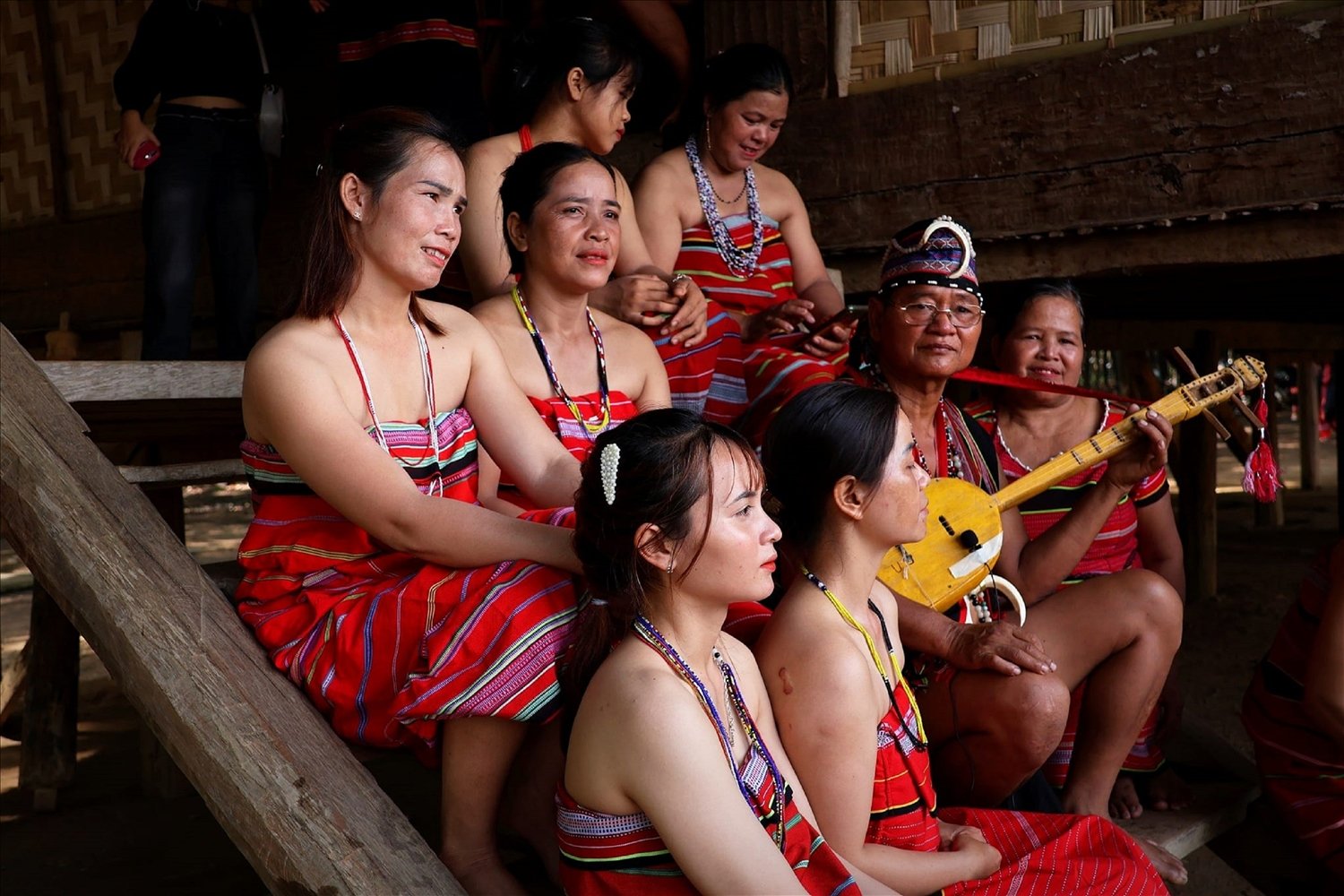
Vitality from culture
Dak Rang attracts tourists by its traditional cultural quintessence. Many people who come here find peace from the honest and simple people, immerse themselves in the gong and cymbal sounds of the artisans, admire the musical instruments and traditional costumes under the cool thatched roof of the Rong house, enjoy traditional cuisine and immerse themselves in the melodious Gie Trieng folk songs. On the village road, in traditional costumes, men play gongs, women dance xoang, the whole village seems to be in a festival.
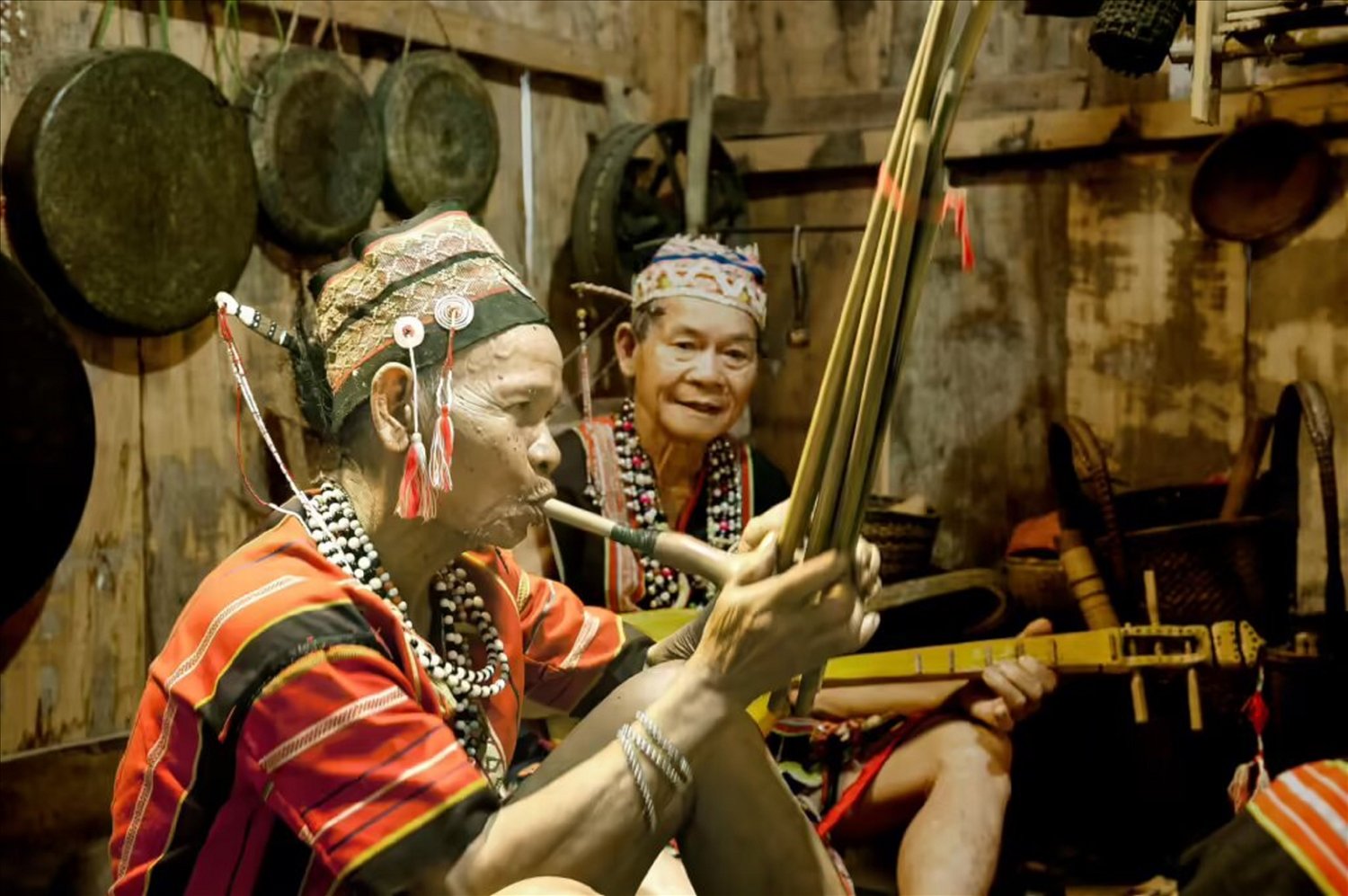
One good thing is that in Dak Rang, from the beginning to the end of the village, almost every house has a loom, colorful brocades. Many Gie Trieng women such as Mrs. Y Ngoi, Y Gio, Y Pleor, Y Ngan... despite their old age, still work hard every day at the loom weaving each brocade. On festival days, from the old to the young, men and women all "show off their beauty" in colorful brocades. Dak Rang village currently has about 30 women who regularly maintain the brocade weaving profession. Currently, in the group, there are 2 main artisans teaching brocade weaving to the younger generation, artisans Y Ngan and Y Gio. In addition to the 2 main artisans in charge, the village also invites a number of older, skilled brocade weaving artisans to come and teach the young generation in the village.
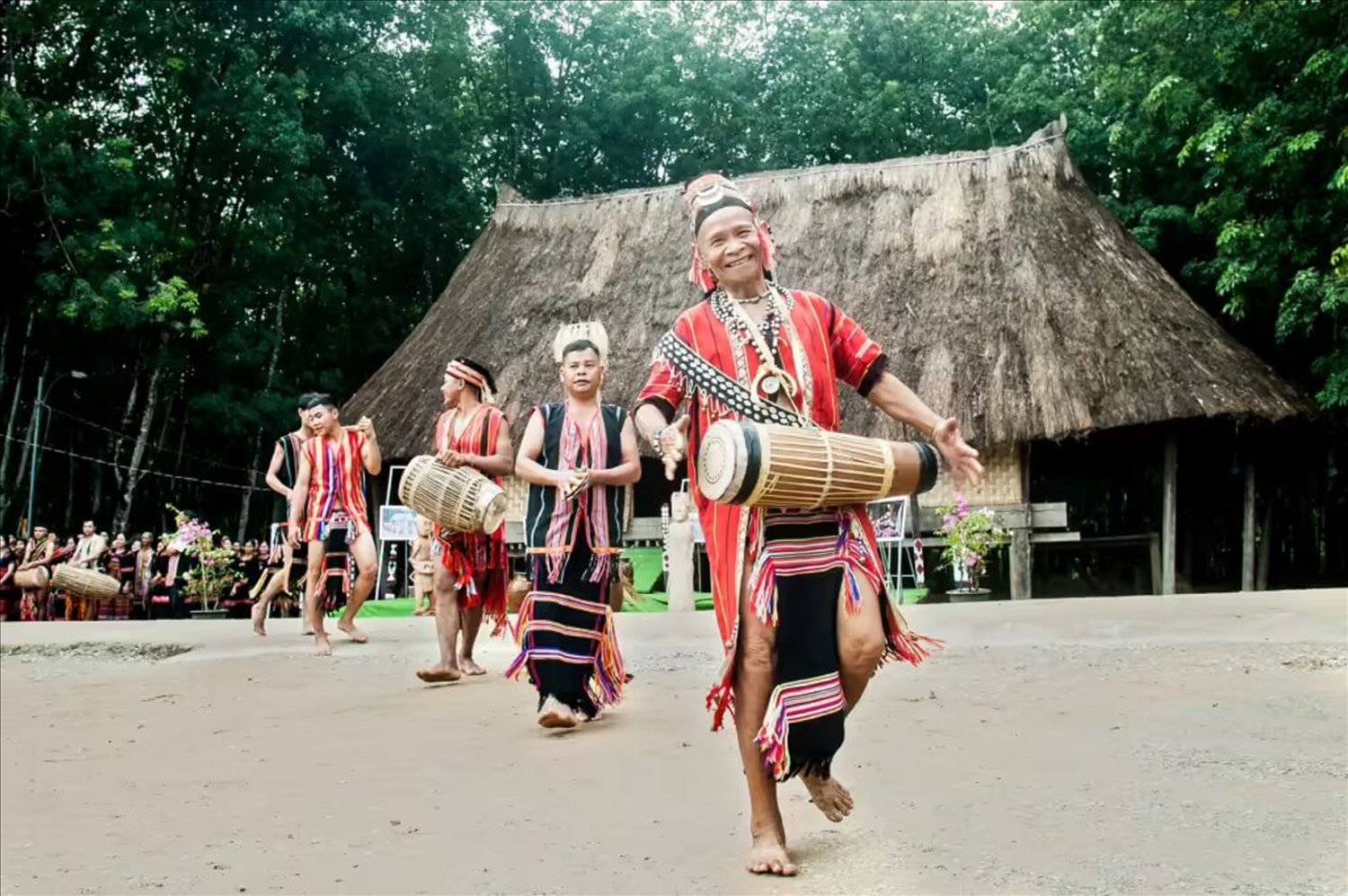
Mr. Hieng Lang Thang, Chairman of Dak Duc Commune People's Committee, shared that in order to effectively develop tourism, some households with conditions have built homestay models and guided tourists to visit cultural activities in the village. Dak Duc Commune authorities also support and encourage people to build community tourism models and experience services in agricultural and rural production activities. In the coming time, they will continue to focus on exploiting the strengths of traditional handicraft products such as weaving, statue carving, and brocade weaving. At the same time, they will propose that superiors support investment in infrastructure to serve tourism exploitation.
To preserve and conserve traditional cultural identity, Dak Rang village has established an artisan group led by elder Brôl Vé, attracting 30 members, including gong artisans, traditional musical instrument makers, statue sculptors, and brocade weavers. In addition to participating in cultural events and festivals, the Dak Rang village artisan group also teaches the folk culture of the Gie Trieng people to the younger generation in the village.
Source: https://baodantoc.vn/lang-van-hoa-o-nga-ba-bien-gioi-1733901879654.htm




![[Photo] Visiting Cu Chi Tunnels - a heroic underground feat](https://vstatic.vietnam.vn/vietnam/resource/IMAGE/2025/4/8/06cb489403514b878768dd7262daba0b)





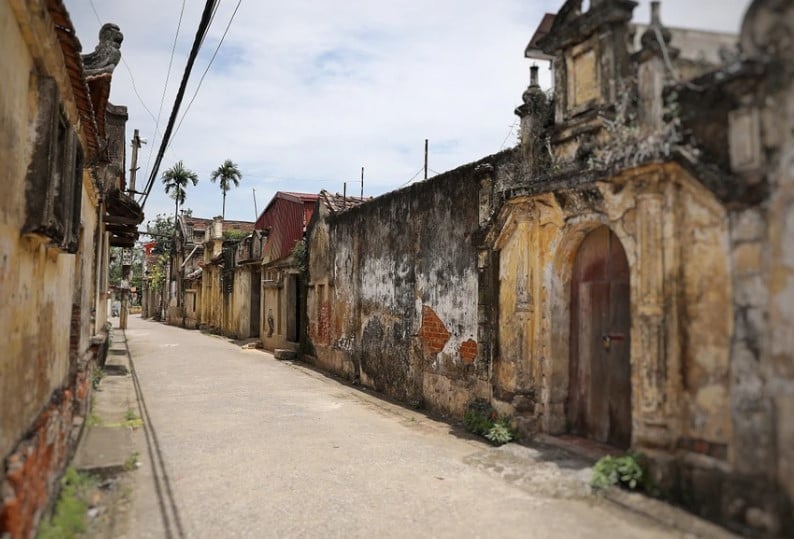

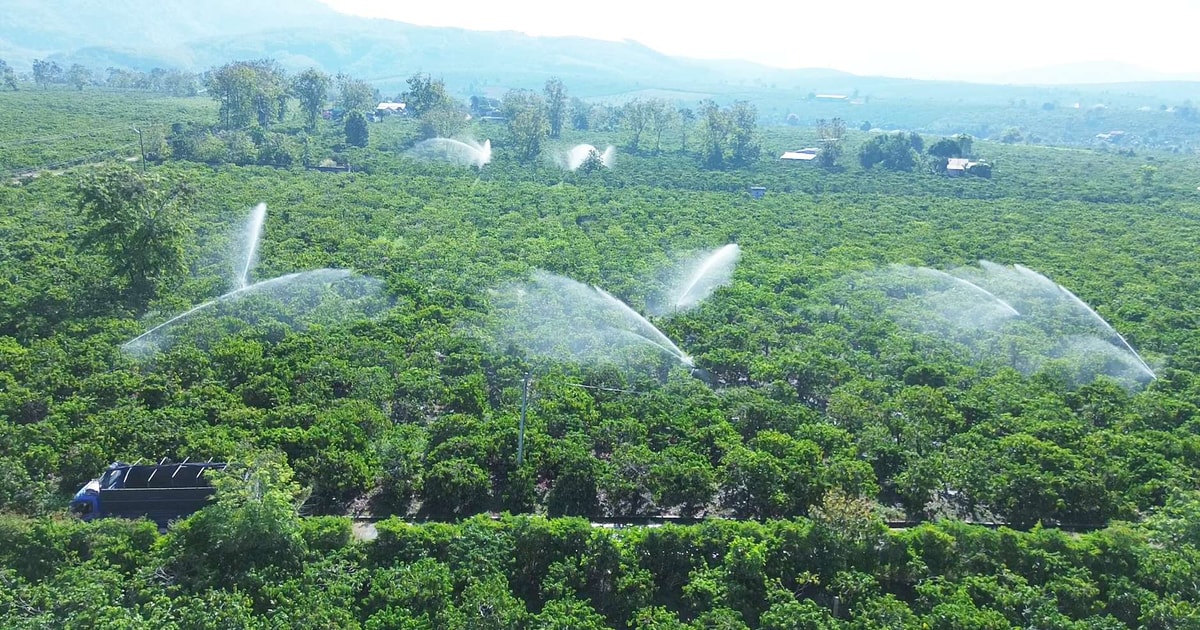


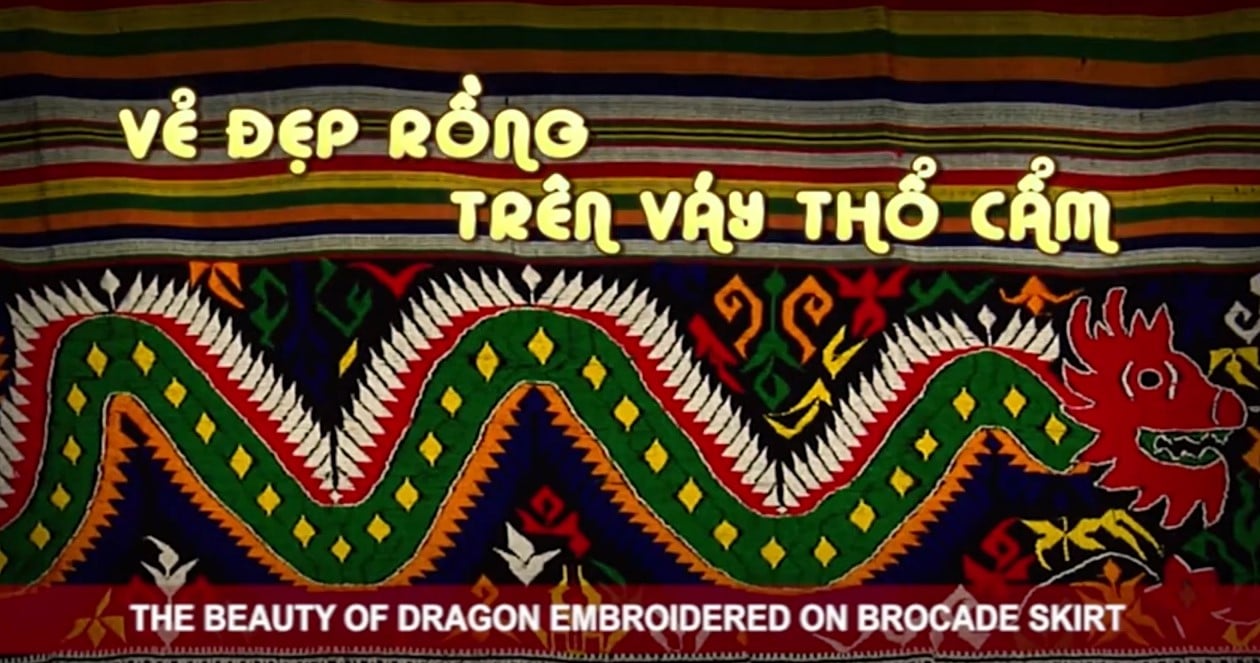


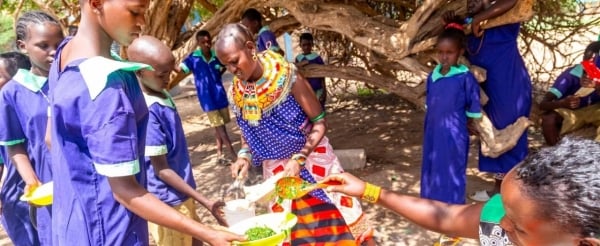
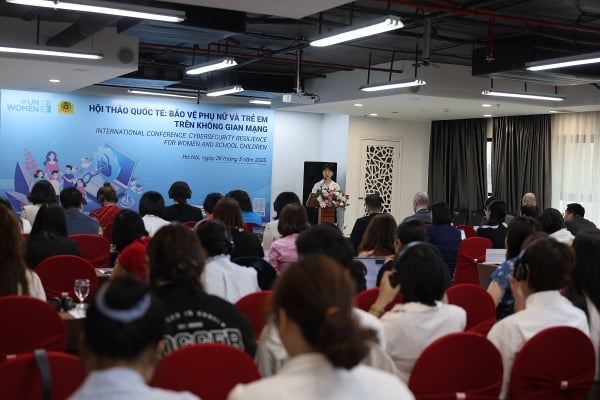
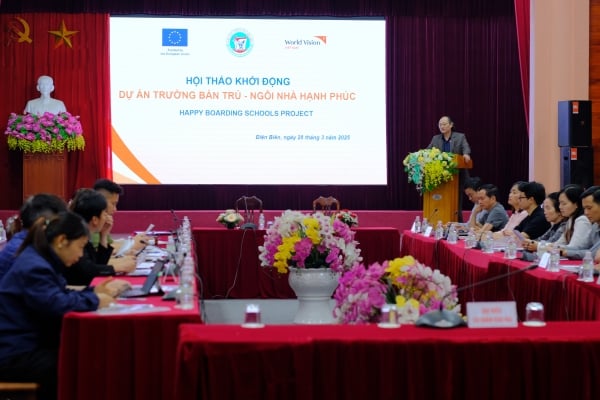
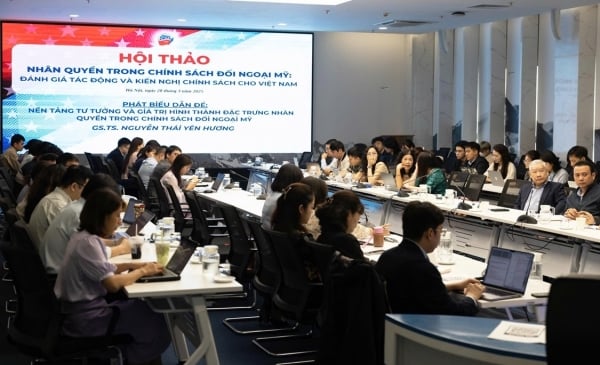



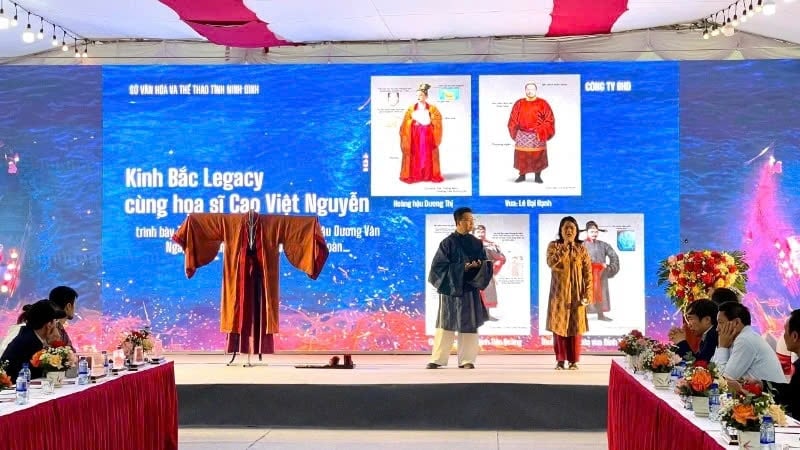
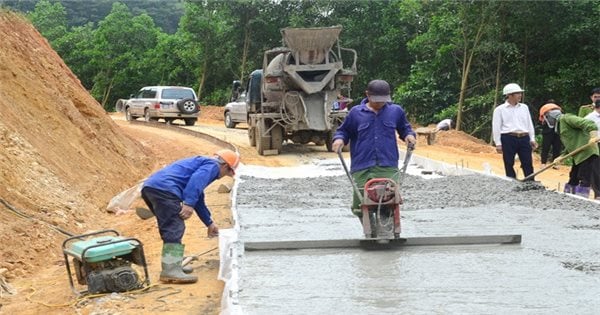
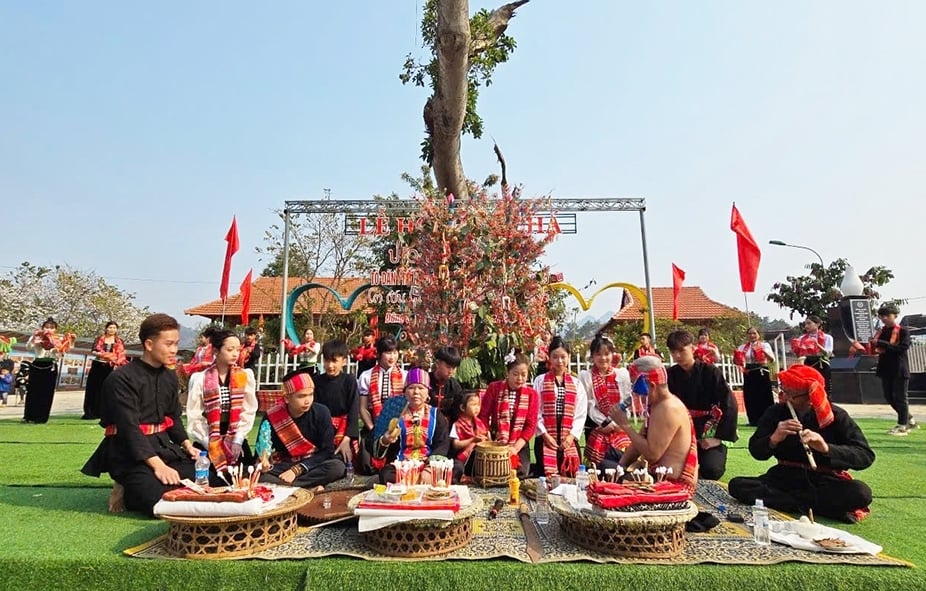
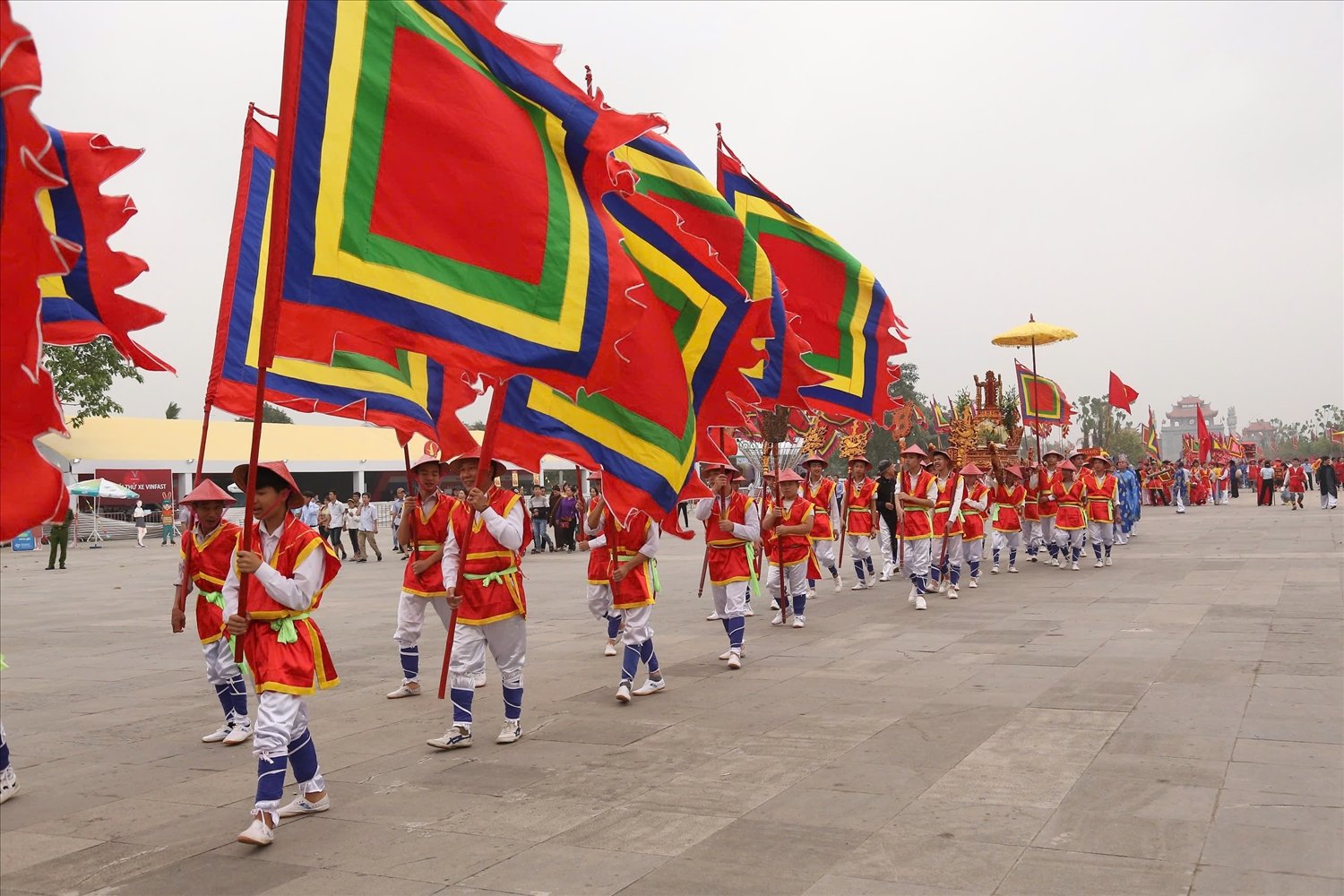

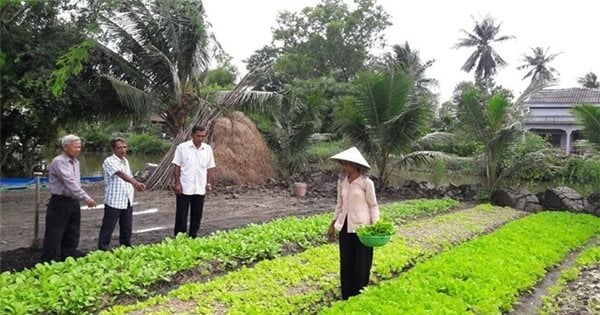




































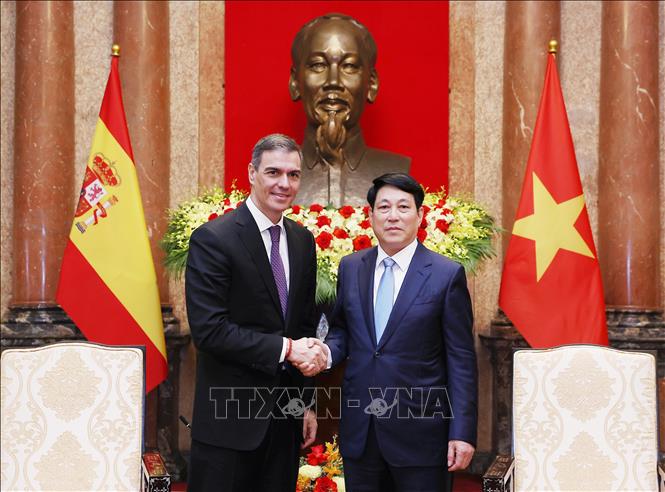








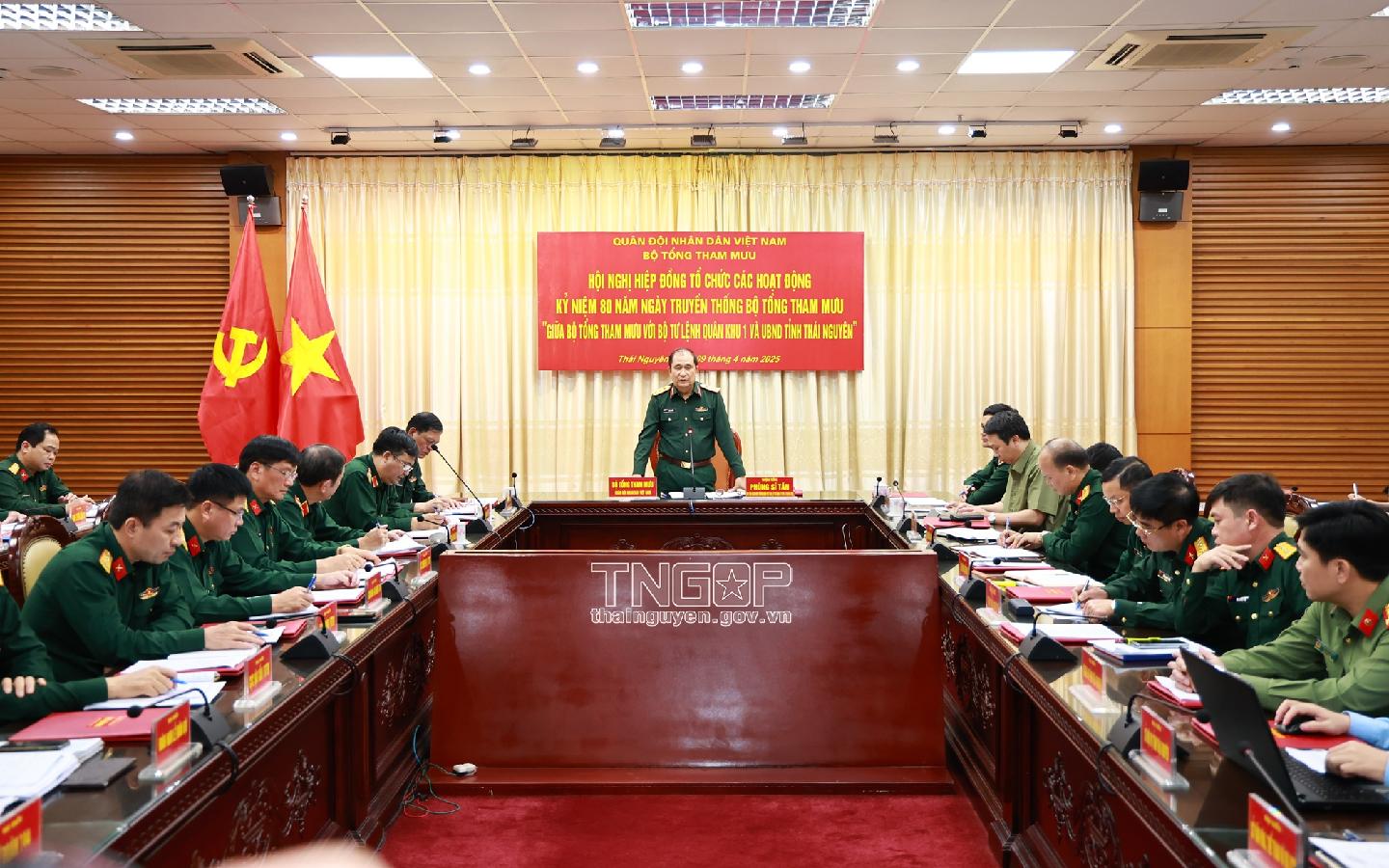
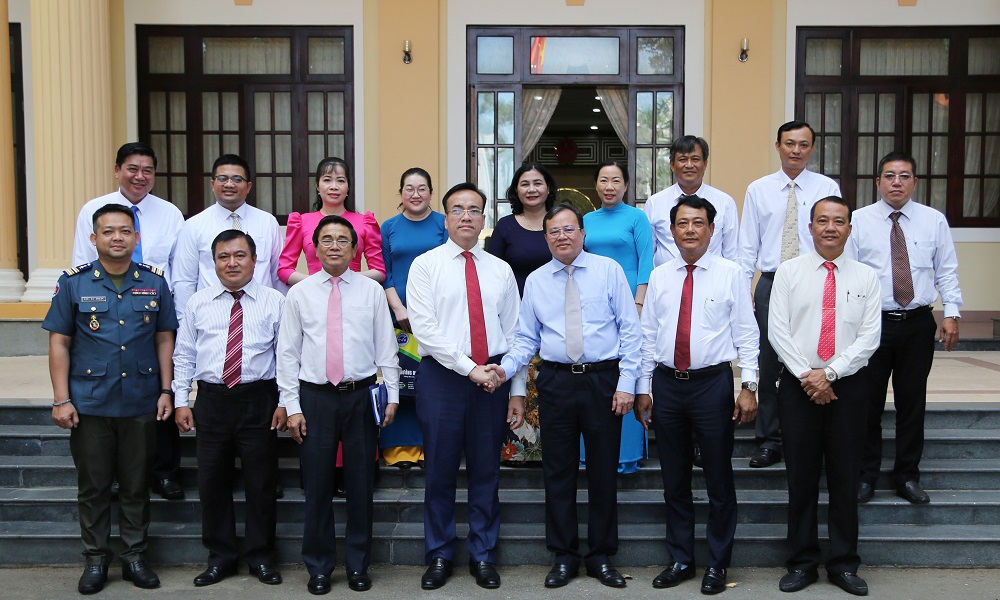
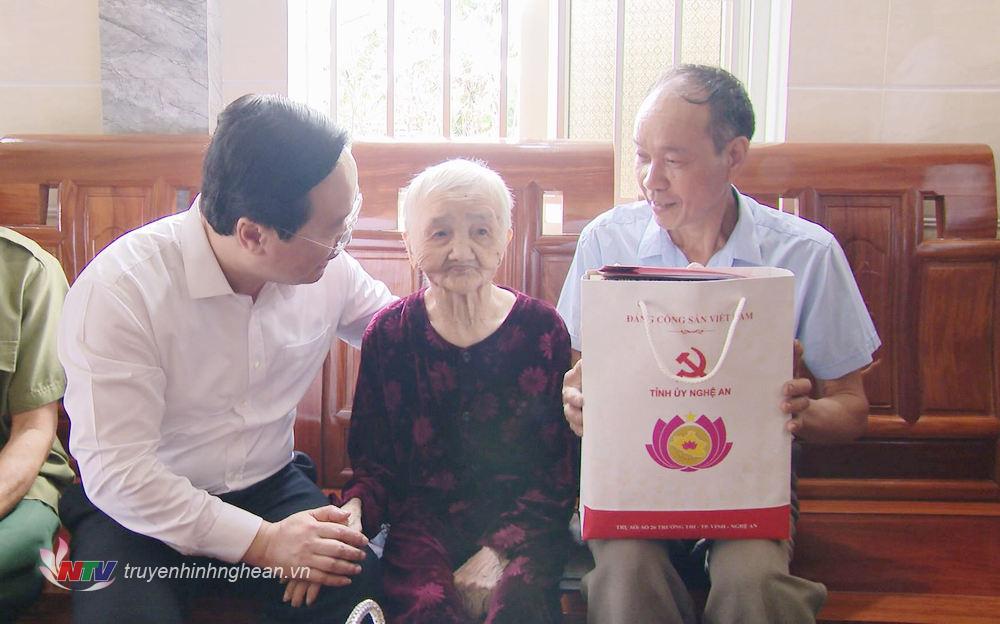
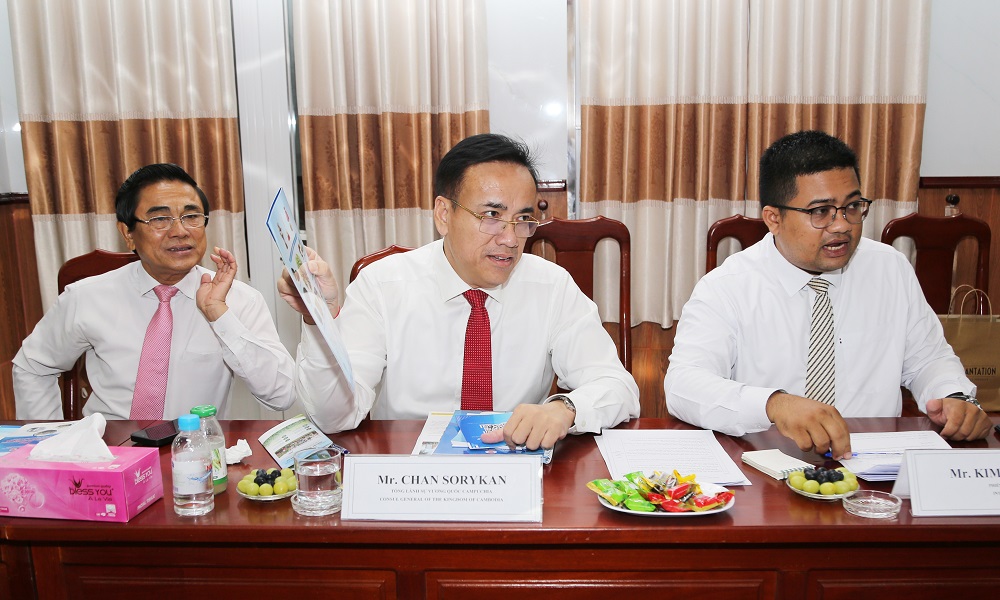
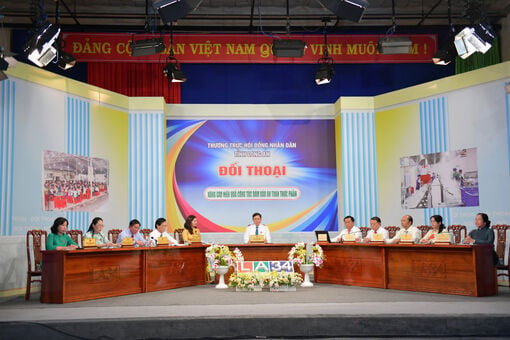











Comment (0)